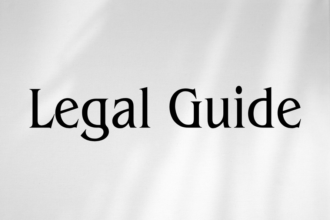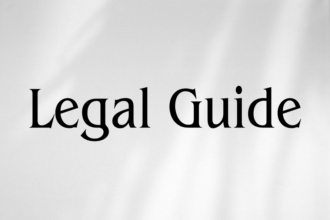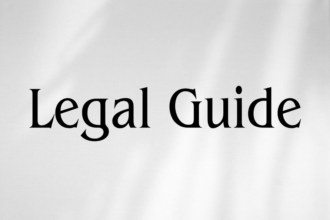Introduction: The Strategic Importance of UAE Aviation Law in a Global Context
The United Arab Emirates (UAE) commands a prominent position in the international aviation industry. As home to some of the world’s busiest airports and fastest-growing airlines, such as Emirates, Etihad, and Air Arabia, the country’s aviation sector is vital to the region’s economic diversification and international trade ambitions. With the aviation landscape evolving rapidly—driven by technological advancement, increased cross-border operations, and mounting regulatory scrutiny—alignment with global legal frameworks has never been more crucial.
This article offers an in-depth analysis of how UAE aviation law aligns with key international conventions, notably the Chicago Convention, the Montreal Convention, and International Civil Aviation Organization (ICAO) standards. It also examines recent UAE legal updates, such as Federal Law No. 20 of 2022 on Civil Aviation and the latest Executive Regulations. For UAE businesses, multinational organizations, legal practitioners, and aviation stakeholders, understanding these convergences and divergences is essential. As both compliance requirements and industry expectations escalate worldwide, a proactive and informed approach to aviation law delivers competitive advantage and mitigates significant legal risks.
Table of Contents
- Overview of UAE Aviation Law and Regulatory Framework
- Key International Aviation Conventions and Standards
- How UAE Law Aligns with International Aviation Conventions
- Detailed Analysis: Major Provisions, Recent Legal Updates, and Official Sources
- Practical Applications and Consultancy Insights
- Risks of Non-Compliance and Strategies for Legal Compliance
- Case Studies and Hypothetical Scenarios
- Conclusion: Key Takeaways and Future Trends for UAE Aviation Law
Overview of UAE Aviation Law and Regulatory Framework
The UAE’s Legal Sources and Regulatory Authorities
The UAE’s aviation sector is governed primarily by Federal Law No. 20 of 2022 on Civil Aviation, along with its Executive Regulations and related Cabinet Resolutions. The General Civil Aviation Authority (GCAA) is the principal regulator, responsible for setting airworthiness standards, licensing, accident investigations, and ensuring compliance with both national and international obligations.
Other relevant authorities include the UAE Ministry of Justice, UAE Ministry of Human Resources and Emiratisation (for employment-related matters in aviation), and the UAE Federal Transport Authority. The UAE is a signatory to key international aviation treaties, which are integrated into domestic law either through express adoption or harmonization of relevant provisions.
Recent Legal Updates: Modernizing the Framework
With the adoption of Federal Law No. 20 of 2022 and new Executive Regulations, the UAE has underscored its commitment to global best practices and the continual modernization of its legal framework. These updates introduce refined definitions, clearer licensing criteria, more robust safety oversight, and new measures for drone operations and unmanned aircraft systems—all reflecting evolving international standards.
| Aspect | Old Law (Federal Law No. 20 of 1991) | New Law (Federal Law No. 20 of 2022) |
|---|---|---|
| Definitions | General; limited on unmanned aircraft | Expanded; explicit coverage of UAVs and drones |
| Licensing | Licensing addressed, but less precise | Standardized in line with ICAO SARPs |
| Safety Management | Generic requirements | Mandates Safety Management Systems (SMS) per ICAO |
| International Convention Incorporation | Varied, some implicit | Express and systematic incorporation |
| Punitive Measures | Fixed penalties | Risk-based, scalable penalties |
Key International Aviation Conventions and Standards
1. Chicago Convention (Convention on International Civil Aviation, 1944)
The Chicago Convention, to which the UAE is a signatory since 1972, is the cornerstone of international civil aviation law. It sets out uniform rules for the use of airspace, principles of non-discrimination, safety, licensing, and the facilitation of global air navigation.
- Annexes and SARPs: The convention’s 19 Annexes establish Standards and Recommended Practices (SARPs) covering aircraft operations, personnel licensing, airworthiness, and more.
- ICAO Compliance: The UAE must ensure that national laws and practices adhere to these SARPs.
2. Montreal Convention 1999
This pivotal treaty modernized and unified liability regimes for international air carriage, addressing passenger injuries, baggage claims, cargo damage, and flight delays. Its provisions are key to passenger protections and airline liability.
3. Other Relevant Conventions
- Tokyo, Hague, and Beijing Conventions: Address offences committed aboard aircraft (unlawful acts, hijacking, etc.).
- Cape Town Convention: Governs secured interests in aircraft equipment, boosting asset-based aviation financing.
- ICAO Guidance and Resolutions: These inform and periodically update UAE regulatory approach, especially as global standards evolve.
How UAE Law Aligns with International Aviation Conventions
Express Incorporation and Harmonization
UAE legal reforms have prioritized harmonization with international normativity. With Federal Law No. 20 of 2022 and accompanying Executive Regulations, the UAE expressly incorporates the operative rules of the Chicago and Montreal Conventions, as well as many ICAO SARPs. This alignment is mirrored in the country’s licensing standards, safety regulations, and incident investigation protocols.
| International Convention | Relevant UAE Legal Provision | Practical Effect |
|---|---|---|
| Chicago Convention (SARPs) | Federal Law No. 20 of 2022, Executive Regs Part III | ICAO-aligned licensing, air navigation, and safety regime |
| Montreal Convention (Liability) | Federal Law No. 20 of 2022, Chap. VI | Unified carrier liability regime, passenger rights |
| Cape Town Convention | UAE Instrument of Accession, Federal Decree No. 5 of 2008 | Legal certainty in aircraft financing, rights of financiers and lessors |
Notable Provisions Addressing International Alignment
- Licensing and Training: Pilots, engineers, and air traffic controllers must hold ICAO-compliant licenses, with regular recertification and mandatory reporting of incidents.
- Safety Oversight: Federal Law No. 20 of 2022 codifies requirements for Safety Management Systems (SMS) and airline audit obligations, fully reflecting international expectations.
- Passenger Protections: Clear adoption of the Montreal Convention’s liability thresholds and compensation mechanisms, directly impacting carriage contracts and litigation expectations.
Detailed Analysis: Major Provisions, Recent Legal Updates, and Official Sources
1. Certification, Licensing, and Safety Management
Article 14 of Federal Law No. 20 of 2022 mandates that all civil aviation activities—including commercial, cargo, and private flights—require authorization from the GCAA. Certification is granted only to applicants meeting ICAO SMS standards, with periodic on-site inspections and compliance audits.
2. Aircraft Registration, Airworthiness, and Aircraft Leasing
The law introduces granular requirements for aircraft registration (Article 22), including nationality marks and technical records. Parallel obligations under the Cape Town Convention are fully recognized, permitting international financiers to enforce rights over aircraft assets registered in the UAE.
- Aircraft must meet both UAE Airworthiness Directives and those issued under the ICAO framework.
- Leasing contracts must be registered with the GCAA and, in case of disputes, are recognized under Cape Town protections.
3. Liability, Passenger Rights, and Insurance
Passenger and carrier rights are modernized in line with the Montreal Convention. Article 45 obliges carriers to maintain robust liability insurance. The law also provides threshold liability limits for personal injury and baggage loss, and enables direct recourse by passengers or insurers in UAE courts.
| Liability Type | UAE Law 2022 | Montreal Convention Standard | Effect in Practice |
|---|---|---|---|
| Death/Personal Injury | Up to 128,821 SDRs | 128,821 SDRs | Direct linkage to Convention cap, certainty for carriers |
| Baggage Loss | 1,288 SDRs | 1,288 SDRs | Passenger compensation matches global norm |
| Delay | 5,346 SDRs | 5,346 SDRs | Clear entitlement, streamlined dispute resolution |
4. Unmanned Aircraft and Drones
The new legislative framework dedicates an entire section to UAVs and drones—unprecedented in prior laws. Operators face strict licensing, airspace management protocols, and geo-fencing requirements, all mirroring evolving ICAO guidance.
Suggested Visual: Compliance Checklist
| Compliance Step | Responsibility | Reference Law/Annex |
|---|---|---|
| Obtain GCAA Operator Certificate | Carrier/operator | Federal Law No. 20/2022, Art. 14 |
| Ensure Airworthiness Compliance | Maintenance provider/airline | Annex 8 (Chicago Convention) |
| Register Aircraft Under UAE Registry | Owner/financier | Federal Law No. 20/2022, Art. 22; Cape Town |
| Procure Adequate Liability Insurance | Carrier | Federal Law No. 20/2022, Art. 45 |
| Implement Safety Management Systems | All licensees | Annex 19 (ICAO SARPs) |
Practical Applications and Consultancy Insights
For Airlines and Operators
Airlines must institutionalize robust compliance programs encompassing initial certification, continual surveillance, safety audits, and periodic license renewals. Key focus areas include:
- Developing internal SMS in line with ICAO and GCAA requirements.
- Reviewing and updating contracts of carriage to harmonize with Montreal Convention liabilities.
- Training frontline staff on incident reporting, emergency protocols, and passenger rights.
- Ensuring all aircraft leases and financing arrangements are registered under Cape Town and local registries.
For Lessors, Financiers, and Investors
The harmonized approach increases legal certainty for lessors and financiers, facilitating cross-border asset-based financing and aircraft repossessions in the UAE. Due diligence, careful structuring of security interests, and timely registration are critical.
For Airport Operators
Airport authorities must work closely with the GCAA to apply international standards on airport security, screening, and emergency response—stringent requirements that can significantly affect operations, insurance obligations, and contractual relationships with airlines and ground handlers.
Risks of Non-Compliance and Strategies for Legal Compliance
Legal and Commercial Risks
- Regulatory Fines: The GCAA—acting under new Executive Regulations—imposes scaled administrative penalties and even operational suspensions for non-compliance with licensing, safety, and liability protocols.
- Reputational Harm: High-profile breaches of international obligations can severely affect a carrier’s reputation, disrupt strategic alliances, and trigger adverse media coverage.
- Contractual Disputes: Failing to maintain required liability insurance or inaccurately framing carrier liabilities may expose airlines to costly litigation.
- Criminal Penalties: Unlawful use of airspace, unlicensed drone operations, or violation of safety protocols may constitute criminal offences under the updated Penal Code and Aviation Law.
Strategic Compliance Measures
- Implement Integrated Compliance Management Systems—Adopt digital platforms to track regulatory updates, ensure document retention, and automate licensing renewals.
- Continuous Legal Audit and Policy Review—Engage specialist legal counsel to periodically review corporate policies, employment contracts, and operational manuals.
- Staff Training and Incident Preparedness—Conduct regular workshops and emergency response drills in compliance with GCAA and ICAO best practices.
- Update Contractual Frameworks—Ensure all customer-facing and supplier contracts reflect the Montreal Convention’s liability and compensation structures.
- Liaise Proactively with Authorities—Maintain open dialogue with the GCAA for advisory rulings and participate in national stakeholder consultations on emerging regulatory trends.
Case Studies and Hypothetical Scenarios
Case Study 1: Carrier Liability for Baggage Loss
Scenario: A UAE-based airline operating an Abu Dhabi–London flight misplaces passenger baggage due to a system outage. The passenger initiates a claim for damages under UAE law.
Legal Analysis: The passenger’s entitlement is calculated based on the 1,288 SDR cap specified in both the Montreal Convention and Federal Law No. 20 of 2022. The carrier’s liability insurer processes the claim in accordance with both instruments. Had the airline failed to maintain compliant liability insurance, it would face both regulatory sanctions and direct liability exposure in UAE and English courts.
Case Study 2: Leasing and Repossession of Aircraft
Scenario: An international lessor seeks to repossess an aircraft following a UAE operator’s default under a finance lease.
Legal Analysis: Thanks to UAE’s accession to the Cape Town Convention and express implementation regulations, the lessor obtains an expedited enforcement order through the local registry. Local courts uphold the lessor’s priority rights, aligning with global practice—mitigating cross-jurisdictional risk and attracting further foreign investment into the UAE aviation sector.
Hypothetical Example: Operational Impact of Non-Compliance
Scenario: A drone services provider fails to renew its GCAA operator certificate, continues commercial operations, and is detected by airport security.
Legal Analysis: The provider is subject to immediate suspension, fines, and possible criminal prosecution under both Federal Law No. 20 of 2022 and associated implementing regulations. This underscores the need for robust compliance tracking and direct engagement with GCAA authorities regarding overlaps in manned and unmanned flight operations.
Conclusion: Key Takeaways and Future Trends for UAE Aviation Law
The UAE’s intensive efforts to align its aviation legal regime with international conventions have elevated the nation’s status as a global aviation leader. Through Federal Law No. 20 of 2022, new Executive Regulations, and the integration of international treaty obligations, the UAE now offers an exemplary model for legal certainty, investor protection, and passenger rights. For airlines, financiers, suppliers, airport operators, and service providers, proactive regulatory engagement and rigorous internal compliance programs are non-negotiable.
Looking ahead, further modernization is expected. Anticipated areas of evolution include tighter rules around environmental sustainability (aligned with ICAO’s CORSIA framework), increased oversight of cyber risks, and enhanced drone regulation. Businesses should monitor future Cabinet Resolutions and GCAA advisories, leveraging legal counsel to integrate these changes into their operational risk governance.
Best Practice Recommendation: Conduct comprehensive internal audits, review contractual terms to reflect new legal liabilities, and invest in ongoing regulatory intelligence to future-proof aviation compliance. Collaborating with experienced UAE legal consultants ensures your business not only keeps pace with change but also turns regulatory compliance into commercial opportunity.




